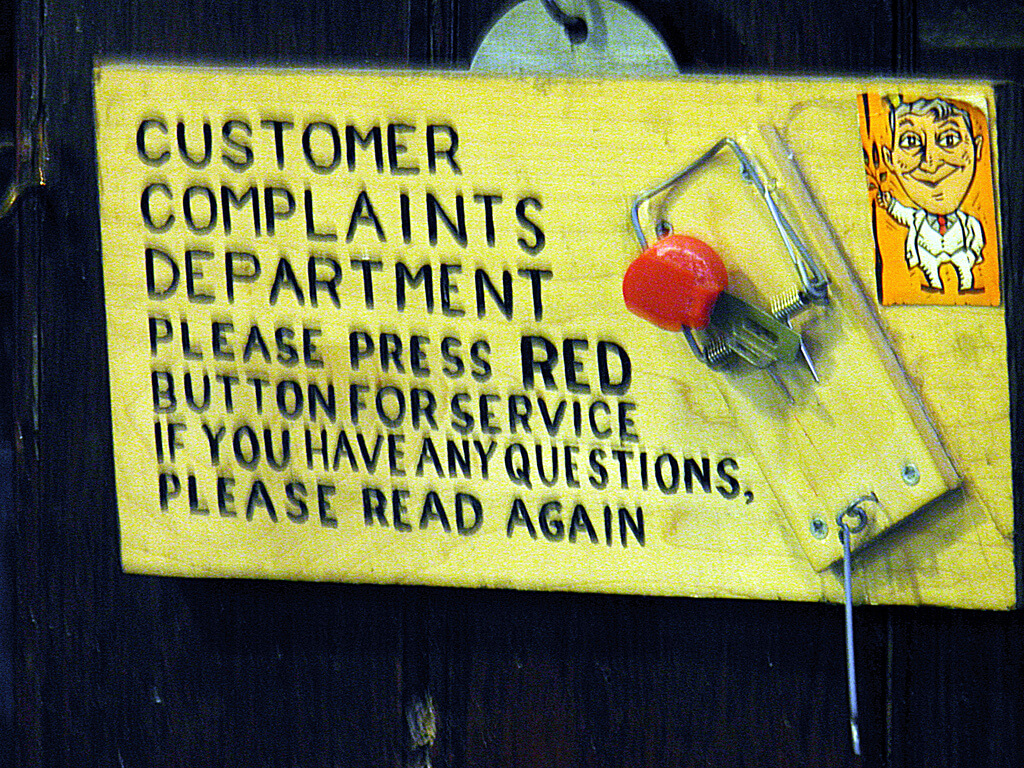Keeping Customers is as Important as Getting Customers
When you get new customers, do you know what happens to them? Are they thrown into a sea of impolite customer service representatives and employees? Are they getting the high-quality product or service you promised them?

New sales are but a small part of a successful business. While new customers are important, actually critical, to every business, properly managing and retaining customers form the real backbone of business success. Everyone, from the sales staff to the front-line customer service representatives to the CEO, should concern themselves with customer satisfaction and customer management. All employees, regardless of their primary job duties, are responsible for promoting and representing the business. Therefore, employees often are the most effective, and inexpensive, sales tools.
Failing to properly manage customers and maintain customer satisfaction extends far beyond the loss of the affected client. Once they are gone, so too are the people they know — your potential future customers.
Maintaining current customers and establishing future customers is why every business should implement a solid customer management and retention program. Your program should have the following goals:
1. Maintain customer satisfaction.
This is the most important element; all others depend on it. The inability to satisfy customers quickly results in the loss of a customer base for a business and soon after that, the loss of the business. First of all, make sure you have a quality product or service. Next, ensure your business and employees are easy to deal with and polite. The words, “thank you,” go a long way.
Empower your customers and ask them questions to make sure their needs are met and they are fully satisfied. After all, dissatisfied customers tell seven to ten people, while satisfied customers only tell an average of one person. Also, give your employees a “script” they can use to talk about your product or service. “When we talk about our service to other people, they want to know these things…” Case studies show a broad history of a quality product or service, rather than a laundry list of “we do this, we do that.” Stories are more personal and show the value of your product or service in a real life context.
2. Resolve customer problems and disputes.
No one wants a hassle — and that goes for your employees as much as your customers. Implement a system whereby front-line employees can resolve issues quickly and painlessly. Provide front-line employees with the ability to make customers happy. Oftentimes, when a situation has to go to the manager, the manager is often more likely to simply give items away to get the customer off the phone.
Unfortunately, while this may resolve the situation, it does little to regain customer satisfaction and trust. Front-line employees, on the other hand, have the necessary information to put the problem into its proper context and are better able to appropriately address the issue. Teach employees how to be active listeners and affirm what?s true. At times, it may be necessary to reset expectations… “I understand your expectation, but some other customers see it this way…” If a customer simply is unreasonable, or becomes abusive, it?s acceptable to tell them to take their business elsewhere. However, if this seems to happen too often, it may be a sign your product and service are in need of rehabilitation.
2. Keep ’em coming back.
Stay in contact with your customers so you can ask for a reorder and renew the value of your product. Sometimes, it becomes necessary to resell your product or service, and remind them why they came to you in the first place. “When we first talked, you told me … Is that still true? Did we deliver on that? What’s important now?” Reorders are much more profitable than new business since there is no customer acquisition cost. You might even have some leverage to offer a discount.
3. Ask for referrals.
Referrals are a business owner’s best friend and perhaps the best affirmation of customer satisfaction. When the opportunity presents itself, ask customers for referrals. And when possible, put current customers and future prospects (and referral partners) in a room together, such as at a holiday party or a sporting event. Simply buying lunch for a group of customers so they can talk about your service or product is an excellent way to expand your business as well. It’s actually a pretty small world when you’re willing to venture into it, and referrals make it even smaller and more manageable. Incentives for referrals offer a progressive business strategy. While monetary rewards such as referral fees can be effective, they also impact your bottom line. Consider non-monetary rewards such as additional products or services you offer.
The importance of management is nothing new to business. However,the art of managing your customers, in addition to your employees, often is overlooked. Effective customer management and retention are vital to a successful and profitable business. Keep your eyes open for future customers but don’t forget your current customers — loyalty is often rewarded.
Want more on Customer Service & Retention?
Brad Farris recently conducted an interview on the topic. Drop us a note and we’ll send out a CD with the full interview.
Photo credit: gordon2208